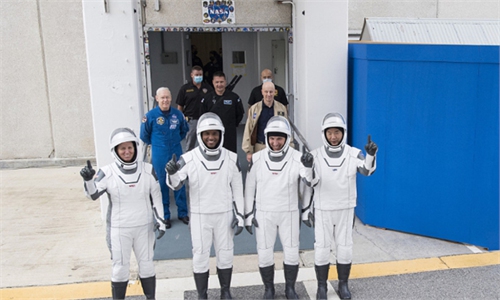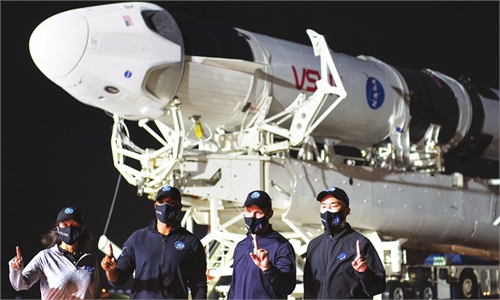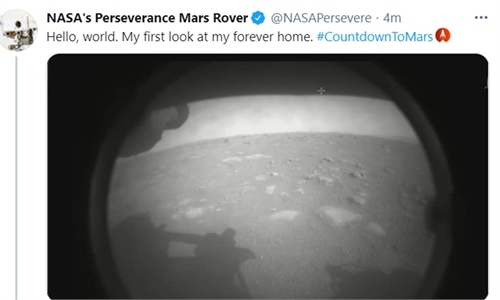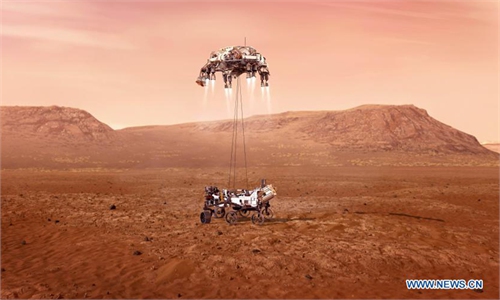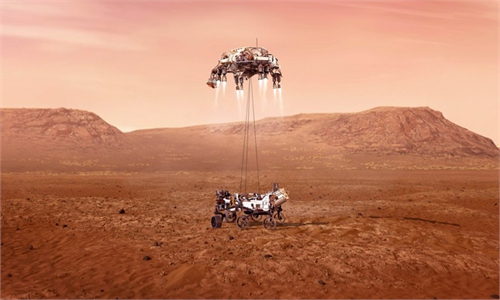‘Ingenuity’ to make history on Red Planet after software issue delay
NASA aims for helicopter flight on Mars
NASA is hoping to make history early Monday when the Ingenuity Mars helicopter attempts the first powered, controlled flight on another planet.
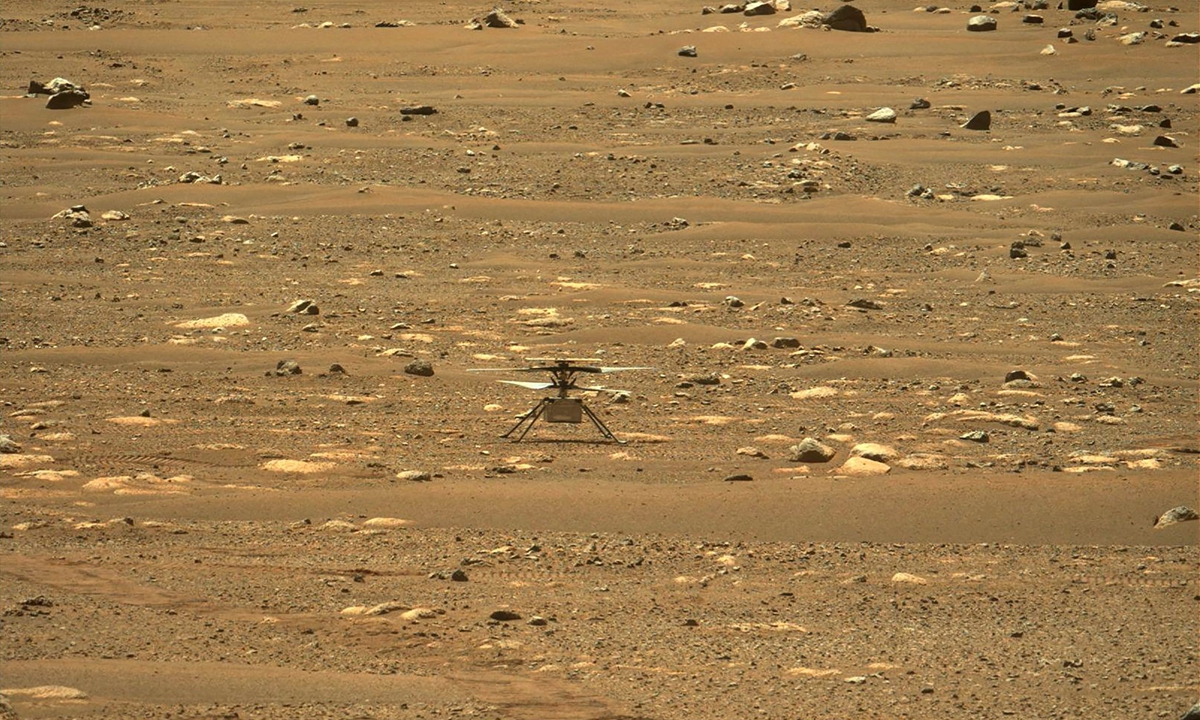
The space agency had originally planned the flight for April 11 but postponed it over a software issue that was identified during a planned high-speed test of the aircraft's rotors. The issue has since been resolved, and the 1.8-kilogram drone could achieve its feat by around 3:30 am Eastern Time (7:30 GMT). Data, however, won't arrive until several hours later, and NASA will begin a livestream at 6:15 am (10:15 GMT).
"Each world gets only one first flight," MiMi Aung, the Ingenuity project manager, said before the first attempt.
The first powered flight on Earth was achieved by the Wright brothers in 1903 in Kitty Hawk, North Carolina. A piece of fabric from that plane has been tucked inside Ingenuity in honor of that feat. The helicopter traveled to Mars attached to the underside of the rover Perseverance, which touched down on the planet on February 18 on a mission to search for signs of extraterrestrial life.
Ingenuity's goal, by contrast, is to demonstrate its technology works, and it won't contribute to Perseverance's science goals. But it is hoped that Ingenuity can pave the way for future flyers that revolutionize our exploration of celestial bodies because they can reach areas that rovers can't go, and travel much faster.
The timing of the helicopter flight is chosen with the weather on Mars in mind. Wind is the big unknown and could jeopardize the mission.
The flight is challenging because the air on Mars is so thin - less than 1 percent of the pressure of Earth's atmosphere.
That makes it much harder to achieve lift, even though it will be partly aided by a gravitational pull that is a third of Earth's.
The helicopter will rise for about six seconds, hover and rotate for about 30 seconds, then go back down.
The flight will be autonomous, preprogrammed into the aircraft because of the 15 minutes it takes for signals to travel from Earth to Mars.
Ingenuity itself will analyze its position with respect to the Martian surface.
After the flight, Ingenuity will send Perseverance technical data on what it has done, and that information will be transmitted back to Earth.
This will include a black and white photo of the Martian surface that Ingenuity is programmed to snap while flying. Later, once its batteries have charged up again, Ingenuity is to transmit another photo - in color, of the Martian horizon, taken with a different camera. But the most spectacular images are supposed to come from the rover Perseverance, which will film the flight from a few meters away.
Shortly after this filming, six videos of 2.5 seconds each will be sent to Earth. NASA hopes at least one of them will show the helicopter in flight.
The entire video will be sent over the following few days.

The NASA's Ingenuity Mars Helicopter right after it successfully completed a high-speed spin-up test, captured by the Mastcam-Z instrument on Perseverance on April 16, 2021. Photo: VCG
The space agency had originally planned the flight for April 11 but postponed it over a software issue that was identified during a planned high-speed test of the aircraft's rotors. The issue has since been resolved, and the 1.8-kilogram drone could achieve its feat by around 3:30 am Eastern Time (7:30 GMT). Data, however, won't arrive until several hours later, and NASA will begin a livestream at 6:15 am (10:15 GMT).
"Each world gets only one first flight," MiMi Aung, the Ingenuity project manager, said before the first attempt.
The first powered flight on Earth was achieved by the Wright brothers in 1903 in Kitty Hawk, North Carolina. A piece of fabric from that plane has been tucked inside Ingenuity in honor of that feat. The helicopter traveled to Mars attached to the underside of the rover Perseverance, which touched down on the planet on February 18 on a mission to search for signs of extraterrestrial life.
Ingenuity's goal, by contrast, is to demonstrate its technology works, and it won't contribute to Perseverance's science goals. But it is hoped that Ingenuity can pave the way for future flyers that revolutionize our exploration of celestial bodies because they can reach areas that rovers can't go, and travel much faster.
The timing of the helicopter flight is chosen with the weather on Mars in mind. Wind is the big unknown and could jeopardize the mission.
The flight is challenging because the air on Mars is so thin - less than 1 percent of the pressure of Earth's atmosphere.
That makes it much harder to achieve lift, even though it will be partly aided by a gravitational pull that is a third of Earth's.
The helicopter will rise for about six seconds, hover and rotate for about 30 seconds, then go back down.
The flight will be autonomous, preprogrammed into the aircraft because of the 15 minutes it takes for signals to travel from Earth to Mars.
Ingenuity itself will analyze its position with respect to the Martian surface.
After the flight, Ingenuity will send Perseverance technical data on what it has done, and that information will be transmitted back to Earth.
This will include a black and white photo of the Martian surface that Ingenuity is programmed to snap while flying. Later, once its batteries have charged up again, Ingenuity is to transmit another photo - in color, of the Martian horizon, taken with a different camera. But the most spectacular images are supposed to come from the rover Perseverance, which will film the flight from a few meters away.
Shortly after this filming, six videos of 2.5 seconds each will be sent to Earth. NASA hopes at least one of them will show the helicopter in flight.
The entire video will be sent over the following few days.
